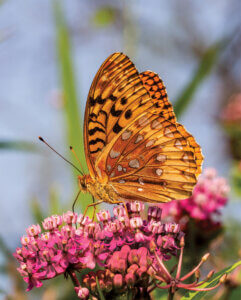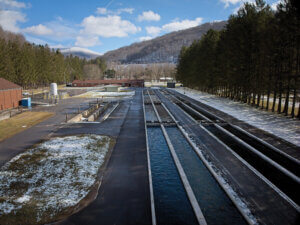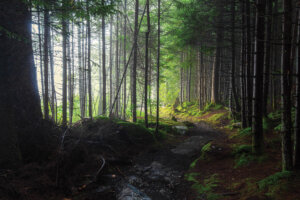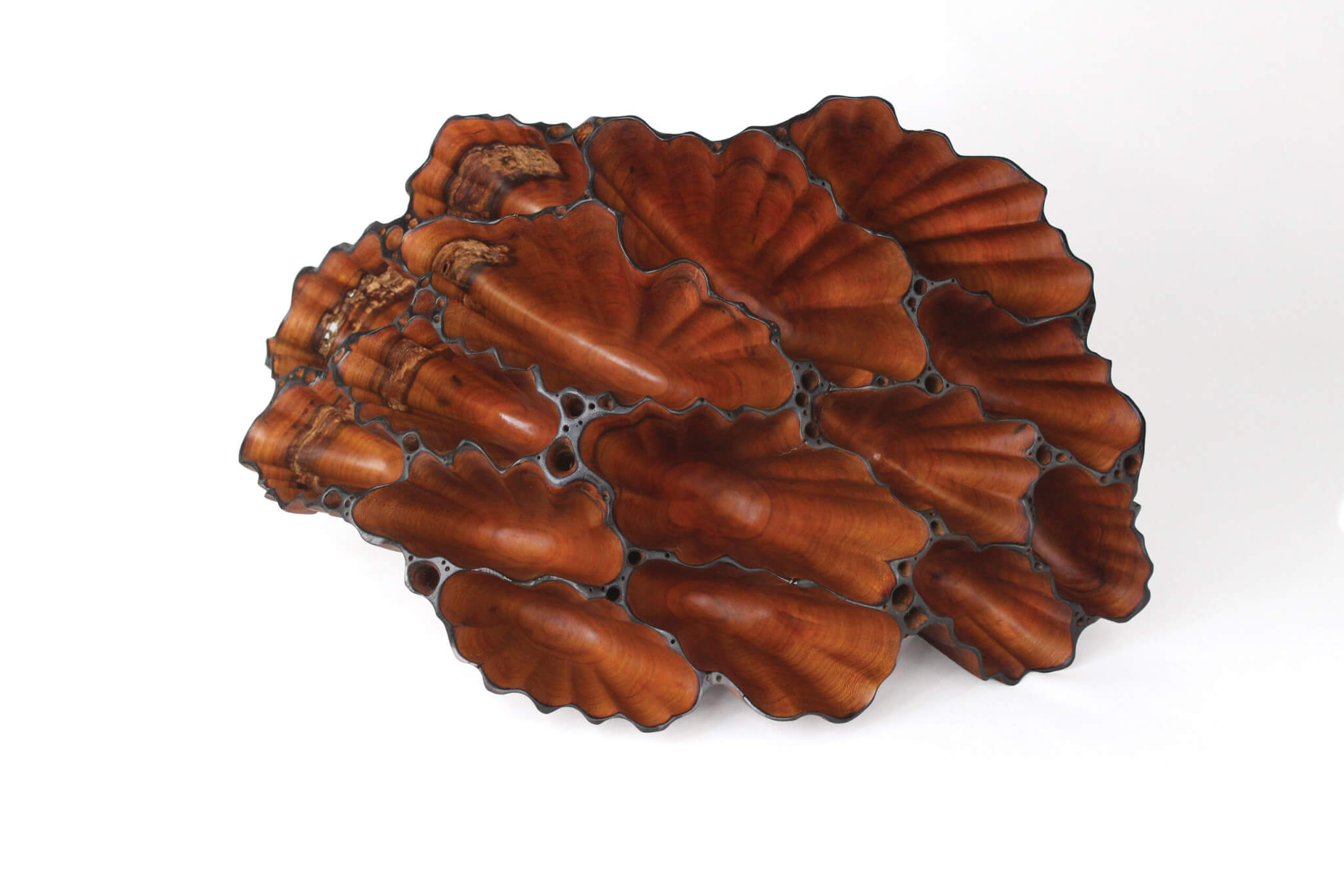
A retired West Virginia arborist transforms native wood into award-winning art.
This story was originally published in the January 2023 issue of Wonderful West Virginia.
To subscribe, visit wonderfulwv.com
Written by David Gignilliat
Photographed by Arlene Abbot Fransen
After a lifetime as a working arborist and a gig-playing jazz musician, Bruce Fransen decided to retire and enjoy the natural beauty of his mountainside home in Harpers Ferry.
But instead of fading away like a fallen leaf see-sawing its way from tree to ground, he extended his branches skyward. And onward. Now, in his early 70s, Fransen continues to combine his life’s two greatest passions—trees and music—and has become an award-winning wood sculptor with a penchant for improvisation.
“I believe art is all about an artful way of life. The process of making art is as much about looking, seeing, and feeling as it is about doing,” says Fransen, a performing woodwind musician since 1972. “While the product may be important to the observer, it is the process which informs the artist and has a profound effect on how the artist sees and interacts with the world.”
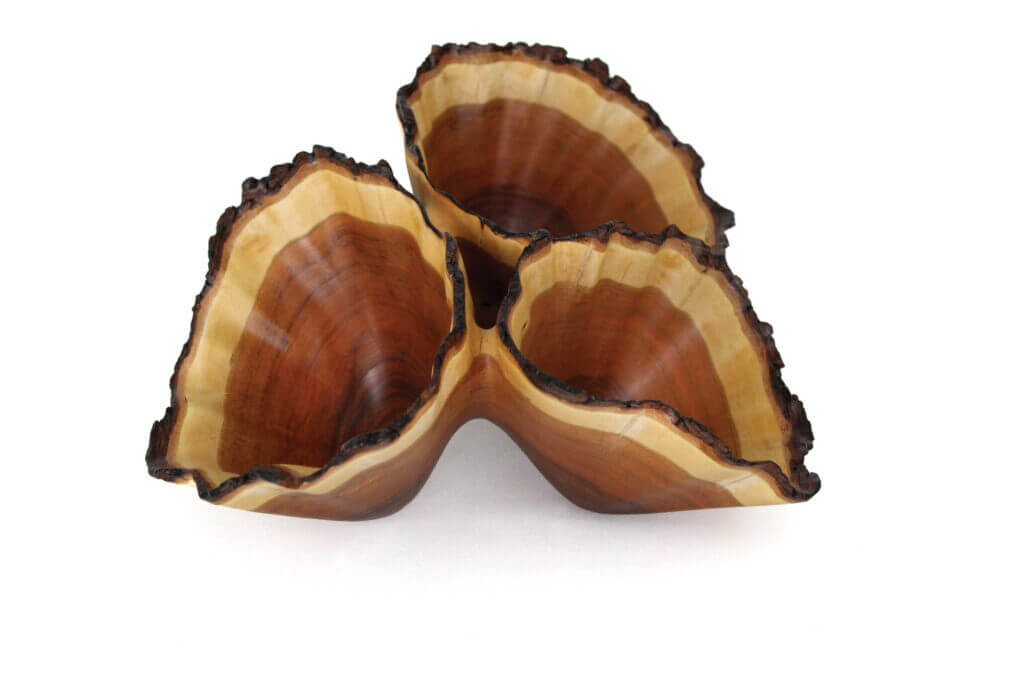
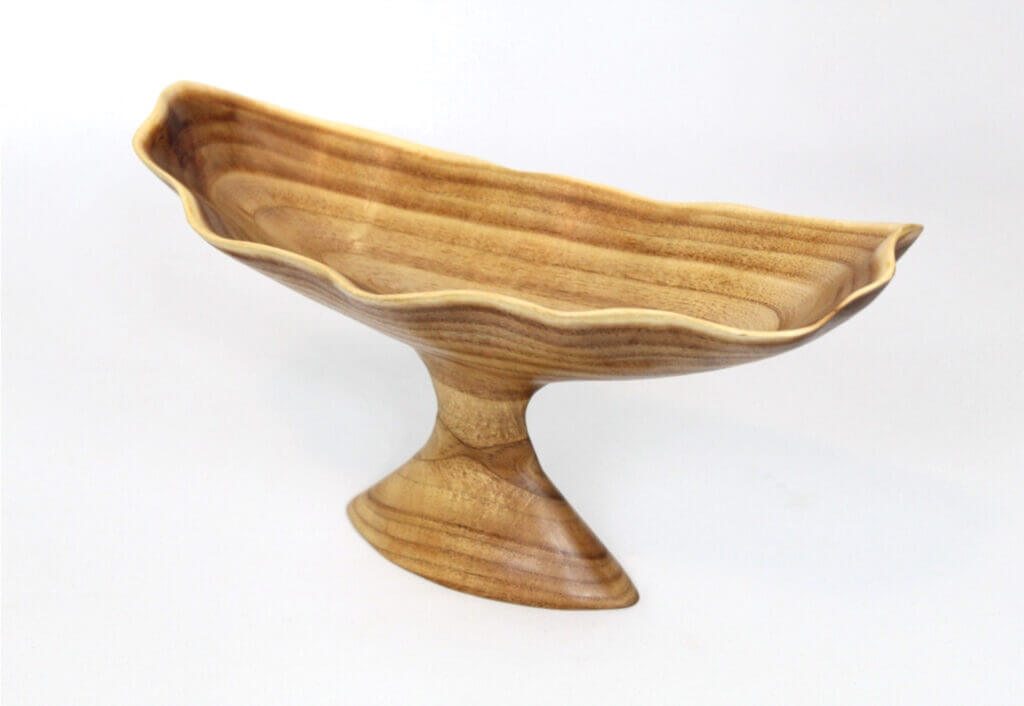
Fransen’s wood sculptures are multi-sensory creations, combining breathtaking and dramatic color, form, and texture with alternating smooth and rough surfaces, flowing edges, and other flourishes reminiscent of sea and nature forms.
Fransen’s work is currently featured at galleries in West Virginia including Tamarack Marketplace in Beckley and The Greenbrier in White Sulphur Springs, as well as galleries in Washington, D.C., Baltimore, Maryland, and northern Virginia.
A Tree-to-Table Approach
The journey from living tree to art object is a long one, and it often starts with finding the right piece of wood.
As a retired arborist, Fransen keeps in touch with his tree-related contacts, and he has friends and watchers who find pieces for him among the state’s diverse ash, dogwood, honey locust, oak, and willow tree populations. Sourcing locally has allowed him to eschew exotic wood imports, which can carry insects and viruses, and to reduce his carbon footprint. In fact, many pieces can come from the same tree.
A wide, 300-foot path leads to the sculptor’s house, making a gravel- and rock-lined corridor that serves as a de facto driveway. His piles of wood stud the perimeter and feature a virtual arboretum of wood detritus: thick, cross-sectioned cuts and knobby trunks, many with taupe-colored fungi barnacled to large pieces of timber. The piles are loosely categorized by species first, and incoming wood gets stored wherever there is available space.
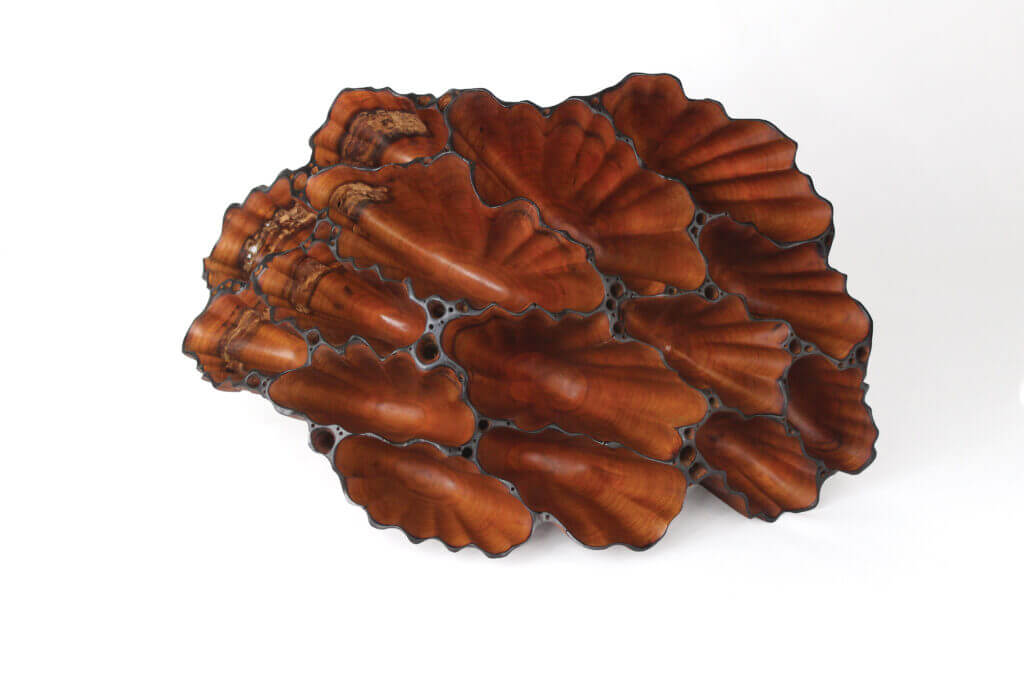
Near the woodpile path is Fransen’s workshop, a large, garage-like space covered in sawdust. The room is filled with a variety of sanders and modified woodworking tools. Large, medium, and small circular pieces of wood are organized in bins and may eventually become tabletops or nightstands. There is a sense of efficiency to Fransen’s workspace, as a variety of everyday objects have been repurposed to fit his needs. Fred Sanford meets MacGyver.
“Sometimes I cannot make what I dream of, and sometimes I invent tools for particular tasks,” says Fransen. “I’ll come out from time to time and take a look, see what I have. Then I’ll start to have some ideas for what I can do with certain pieces.”
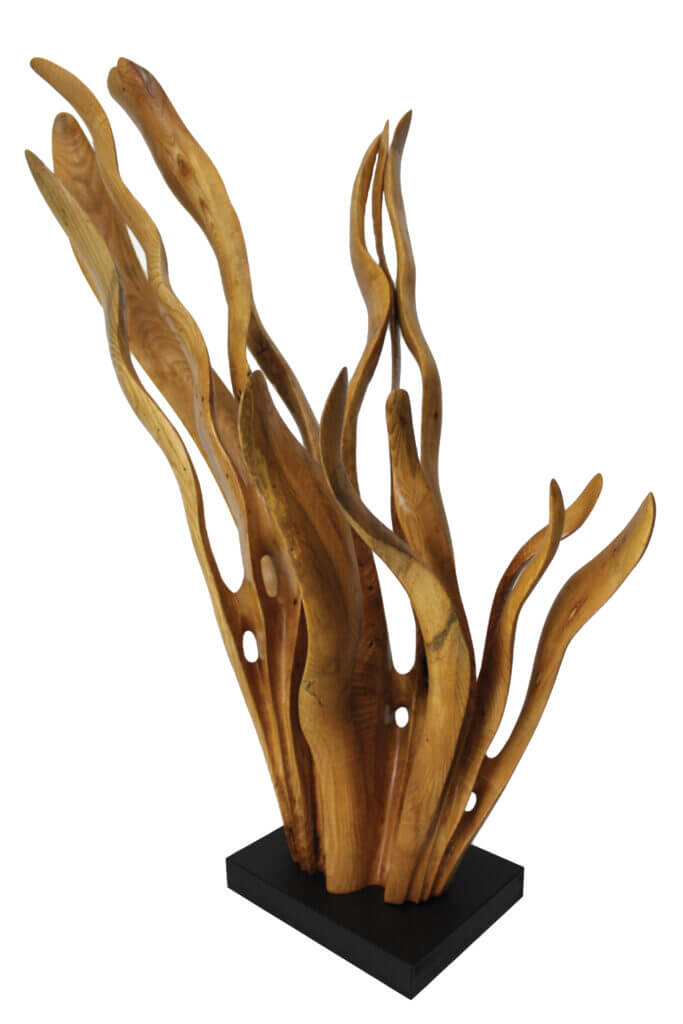
When beginning a new piece, he tries to do as much work as possible outside, using a chainsaw at first to take the wood from its raw form to its intended early shape, and then using a variety of rotating sanding and precision fine tools for hand work. Texture and color are sometimes added for visual and tactile drama. “There is a significant amount of engineering when I’m deciding how to physically produce the forms I imagine,” he says. “I have to decide which tools are appropriate and whether or not it is possible, or at least somewhat practical, to accomplish what I have imagined.”
When he is searching for a piece of wood for a future creation, Fransen often notices the peculiarities more than the wood’s typical characteristics. The eccentricities introduced by a tree’s adjustments to changing environmental conditions in its environment and its interactions with insects, fungi, flora, and fauna tend to yield better art than pieces from a healthy and conventionally normal tree.
“The irregularities in wood attract me simply because that is where the most unusual and often spectacular wood grain is to be found,” says Fransen. “Areas where the grain mixes and twists will produce refraction of light when polished, which can be quite dramatic and changing as one moves about.”
The best raw materials for Fransen’s work are often trash to others, destined for decay as Mother Nature’s effluvium. “The things that people want to throw away, that’s where the good stuff is,” he says. “It is often in the imperfections that you find the gold.”
Tree Terms
Arborist A specialist in the cultivation and care of trees and shrubs, including the diagnosis, treatment, and prevention of tree diseases; the control of pests; and tree surgery.
Burl A tree growth in which the grain has developed in a deformed manner, commonly found as a rounded outgrowth on a tree trunk or branch filled with small knots from dormant buds, and typically a result of stress, such as an injury or a viral or fungal infection. Artistically, it yields a peculiar and highly figured wood that is sought after in woodworking
Compartmentalization When a tree reacts to injury by creating boundaries, helping it to resist the loss of normal wood function and the spread of discoloration and decay.
Heartwood The older, harder, non-living central wood of a tree that is usually darker, denser, less permeable, and more durable than the surrounding sapwood.
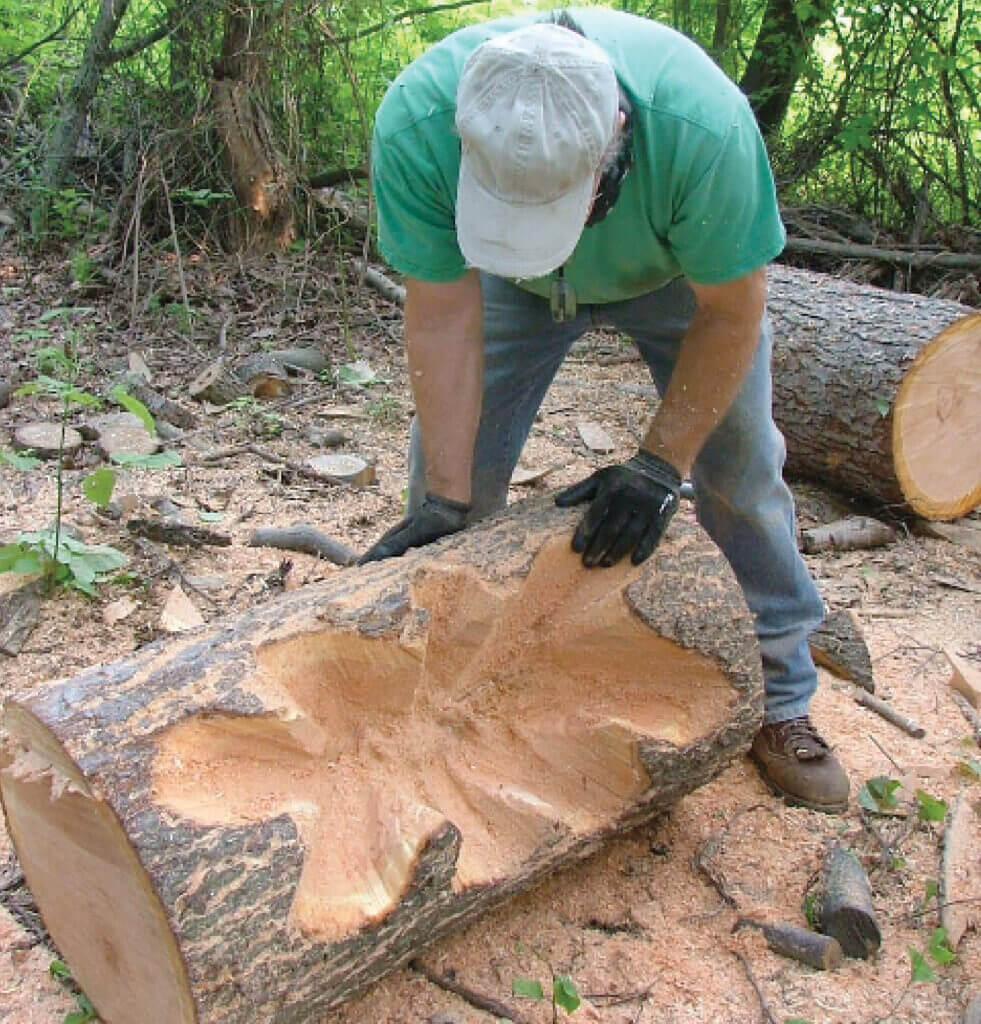
Phenols or phenolics In trees, phenolics occur frequently as polymers, acids, or glycosylated esters and perform diverse functions, including adding structural strength to wood. A common response to injury and infection.
Sapwood The soft outer layers of recently formed wood between the heartwood and the bark, containing the functioning vascular tissue.
Spalting Any form of wood coloration caused by fungi. Found primarily in dead trees, but can also occur in living trees under stress. Artistically, the unique colorations and patterns of spalted wood are sought by woodworkers
Tree crotch A pocket located at the bottom of a point of connection between two or more tree limbs or tree trunks. Sought after artistically for its interesting grain patterns.
An Arborist’s View
One example of this approach would be burls, a type of tree growth in which the grain has developed in a deformed manner. Usually it is in the form of a rounded outgrowth on a tree trunk or branch that is filled with small knots from dormant buds. Burls form when a tree undergoes stress and grows from the roots beneath the ground, often as a result of injury, fungus, or virus.
Often harmful to a tree’s long-term health, these bulbous cysts yield a wonder of unique colors, patterns, and textural oddities. “Sometimes if there’s a wound on the tree, the way that the tree resolves those things makes for a beautiful grain,” says Fransen.
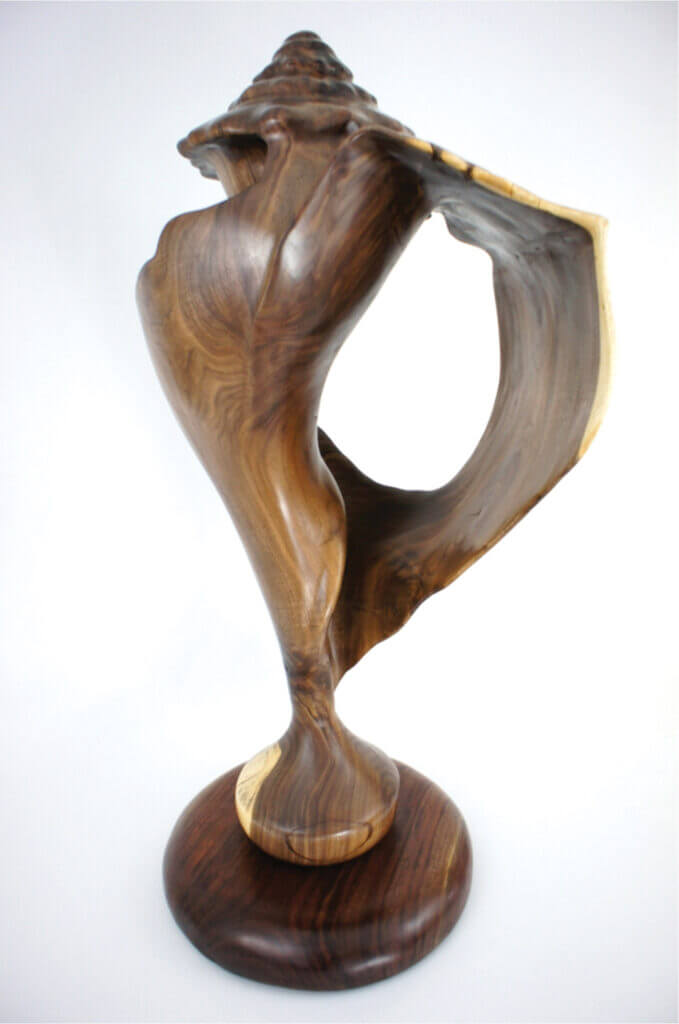
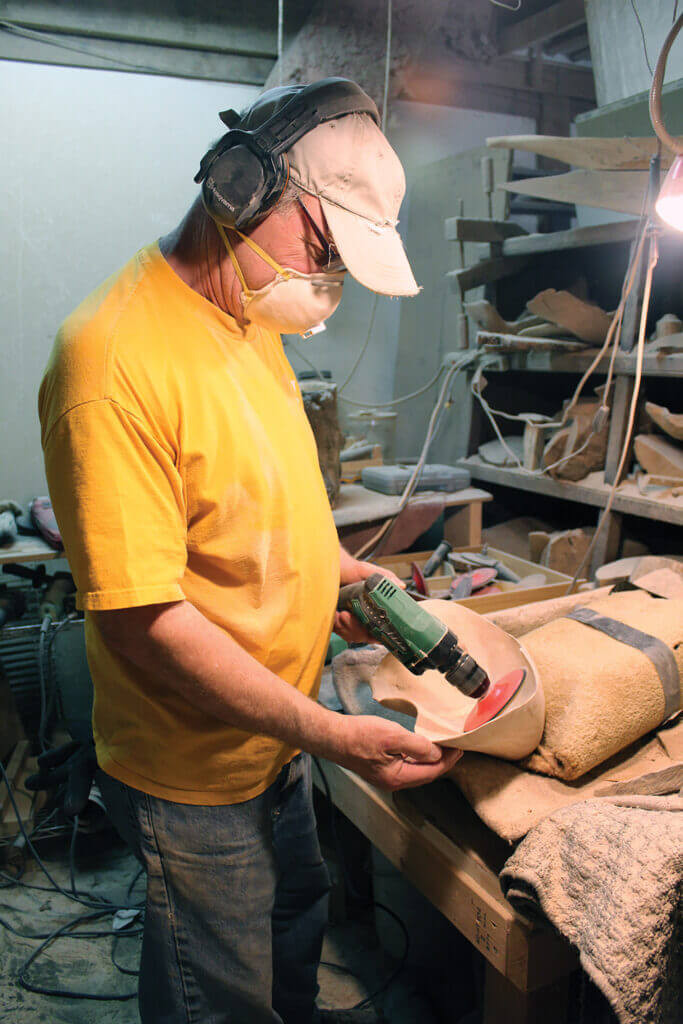
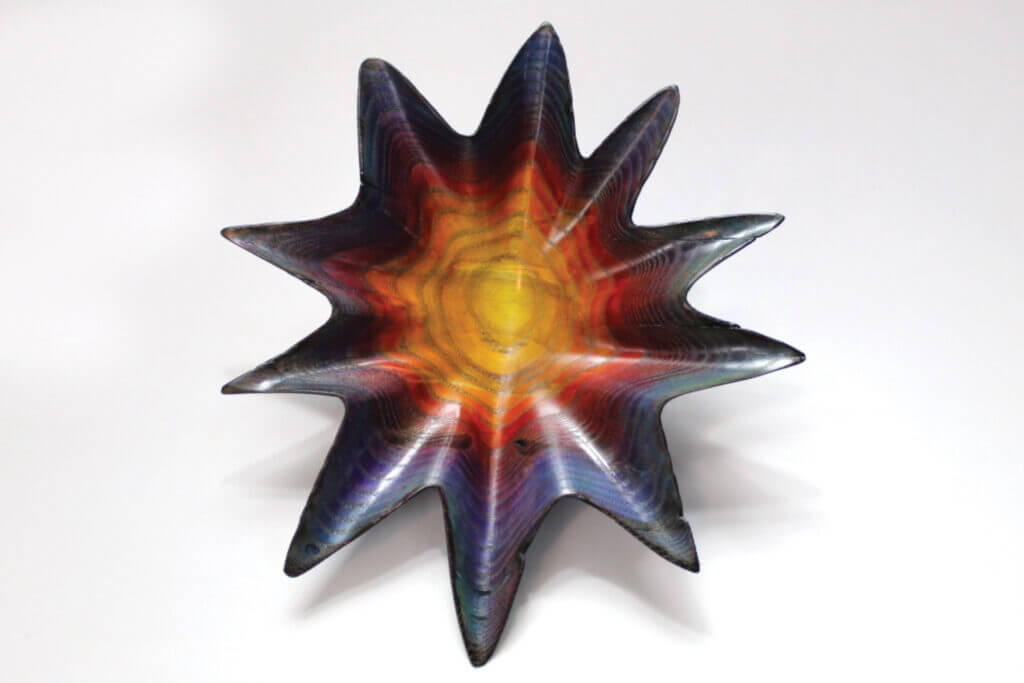
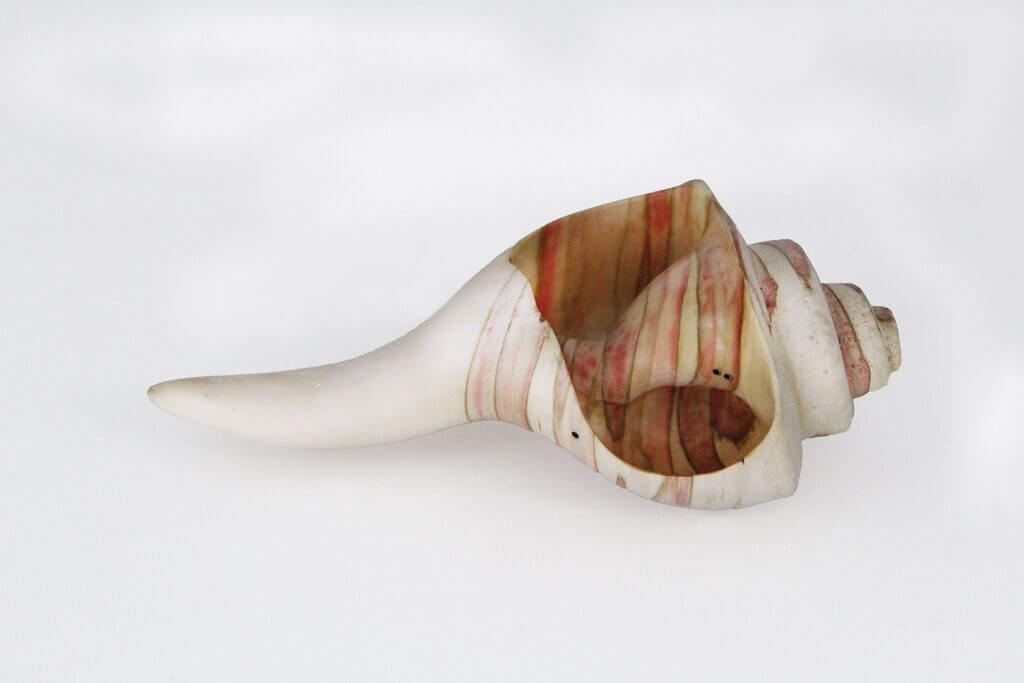
Another example of nature’s intelligent design is the process of feathering, which creates a flame pattern where the tree’s grains come together. “It happens to every tree where there’s a mixing of the grains that creates highlights that refract light, and it results in these absolutely beautiful patterns,” he says.
Spalting, or wood discoloration due to fungi, produces a similar salutary effect for the artist. Certain types of fungus can permanently change wood’s color by producing extracellular pigments inside the wood, whereas others cause white rot or ‘zone lines’—dark dotting, straggled lines, and streaks of red, brown, and black.
Fransen’s lifelong tree work has afforded him a scientist’s understanding of his biological medium, but it’s the jazz in him that gives the art its patina of spontaneity. “Knowing about trees helps to a certain extent, but I would say most of my artwork is done through experimentation rather than science,” says Fransen. “I’m not one for a lot of drawing or preparation. I just enjoy the improvisational approach, like a jazz musician—you have no idea what might come next.”



